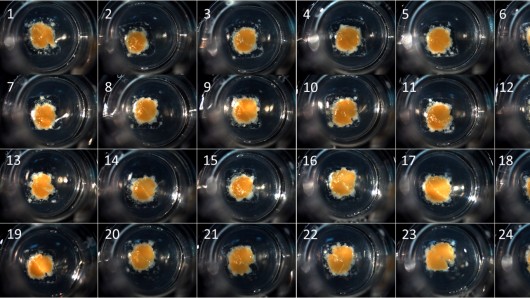
When a medication enters the bloodstream, it ends up being concentrated in the liver – after all, one of the organ's main functions is to cleanse the blood. This means that if a drug is going to have an adverse effect on any part of the body, chances are it will be the liver. It would seem to follow, therefore, that if a pharmaceutical company wanted to test the safety of its products, it would be nice to have some miniature human livers on which to experiment – which is just what San Diego-based biotech firm Organovo is about to start selling.
Known as exVive3D, the three-dimensional liver models measure just a few millimeters across, and are created using a 3D bioprinter. The device incorporates two print heads, one of which deposits a support matrix, and the other of which precisely places human liver cells in it.
The resulting models are composed of living human liver tissue, and incorporate hepatocytes, stellate, and endothelial cells – just like a real, full-sized liver. They also produce liver proteins such as albumin, fibrinogen and transferrin, plus they synthesize cholesterol.
Additionally, the cells are arranged in a 3D orientation relative to one another, as they would be naturally. By contrast, the liver cell cultures currently used to test pharmaceuticals are two-dimensional, and thus may not always function in the same manner as the actual organ.
The exVive3D tissue remains functional for at least 42 days. According to Organovo, this "enables assessment of drug effects over study durations that well beyond those offered by industry-standard 2D liver cell culture systems." Already, the models have demonstrated the abilities to differentiate between structurally-related toxic and non-toxic compounds, and to detect metabolites (molecules that are products of the body's metabolism).
The first exVive3D models will be available to researchers and pharmaceutical companies through Organovo's contract research services program – this means that the tests will be performed by Organovo technicians, at the company's facilities.

 Previous page
Previous page Back to top
Back to top







